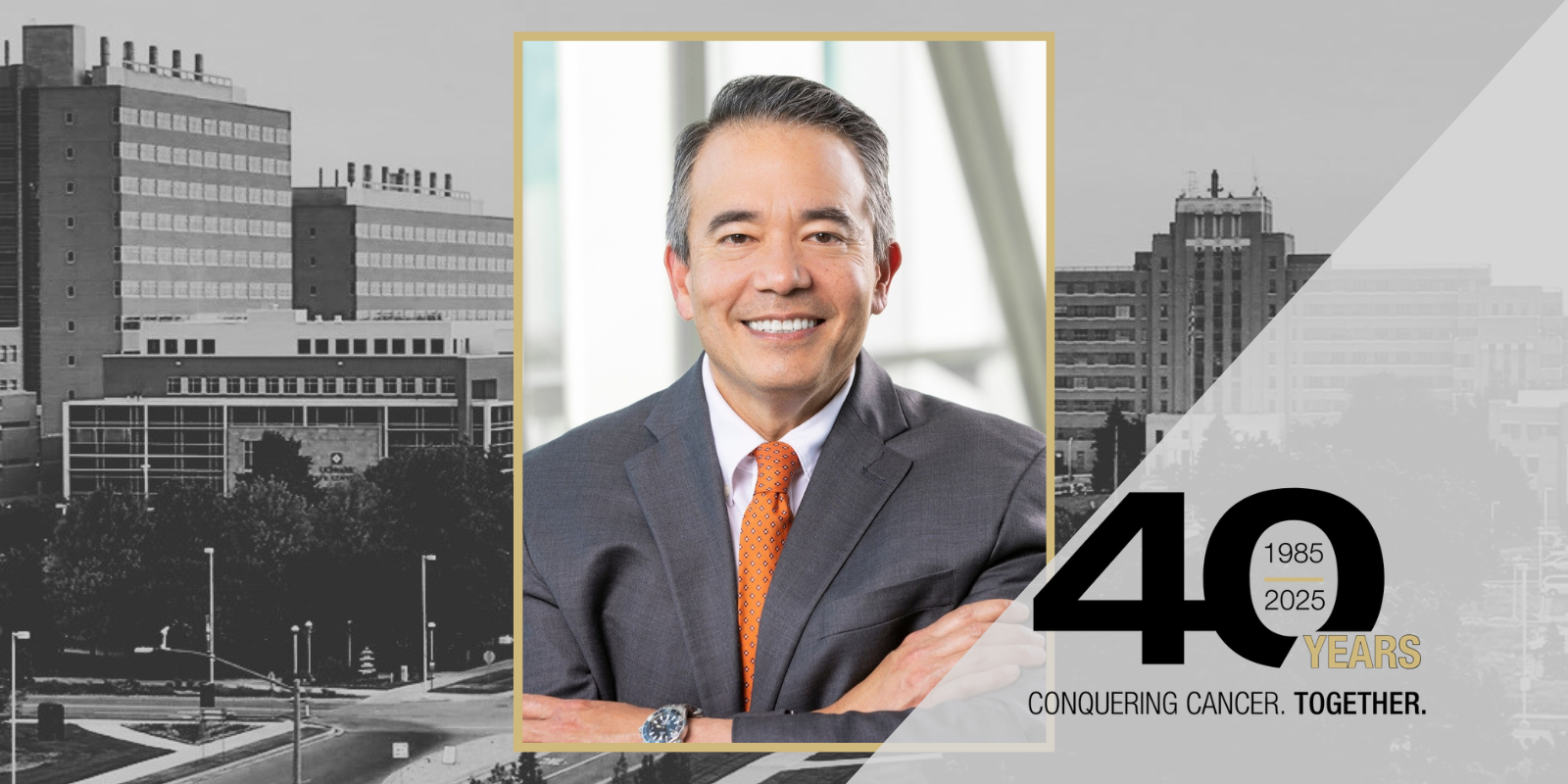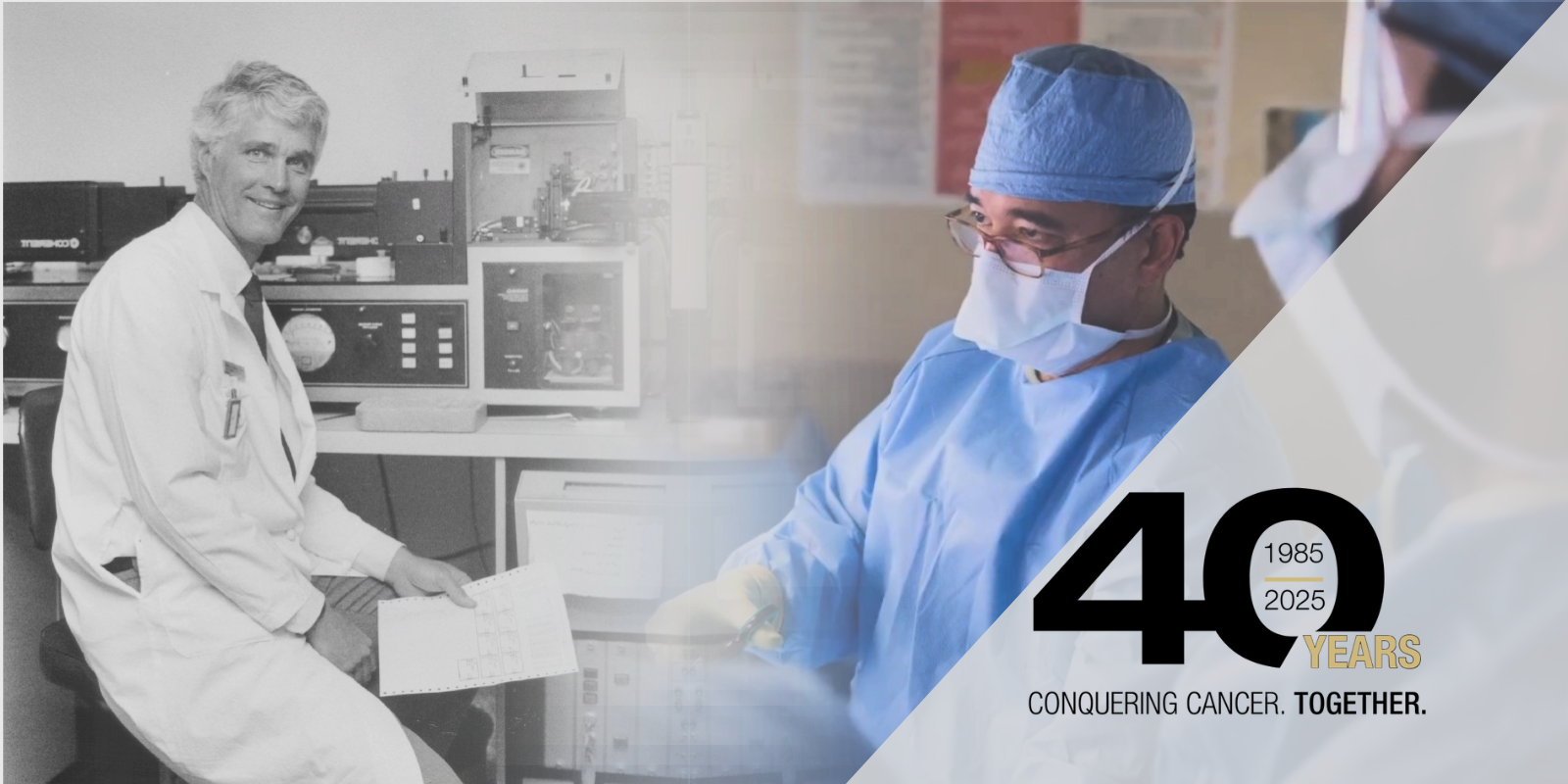Learn more about the history of the University of Colorado Cancer Center.
Forty years is a long time, but when I look back at the history of the University of Colorado Cancer Center — and all that has changed in cancer research and treatment since we opened in 1985 — forty years seems like a really long time.
As director of the CU Cancer Center since 2018, it is such a thrill for me to read through this special issue of the C3 that is dedicated to the cancer center’s 40th anniversary, from its founding in the 1980s under inaugural director Paul Bunn, MD — who is still a part of our faculty, by the way — to its growth over the next four decades.
It’s a pleasure to read about the early days under Paul’s leadership (who knew we had a black-tie benefit in 1998 emceed by Billy Crystal and honoring Olympic figure skaters Peggy Fleming and Scott Hamilton?) and about my predecessor, Dan Theodorescu, MD, PhD, who served as director from 2010 to 2018 and oversaw a $20 million expansion of the Anschutz Cancer Pavilion.
It also is a pleasure to read profiles of two of our longest-serving members: Kevin Lillehei, MD, who will soon step down after 19 years as chair of the Department of Neurosurgery, and Margaret Wierman, MD, who helped to pioneer our treatment of adrenal cancers. Kevin and Margaret are among a small group of active cancer center members who have been here since the beginning, and I value their perspectives and deep institutional knowledge.
Most importantly, it’s a thrill to read about the growth of our efforts over the past 40 years to expand cancer research and improve our treatment of patients. It all started with our first National Cancer Institute core grant in 1988, and it has expanded over the years to include clinical trials, multidisciplinary clinics, shared resources, and our more than 20-year partnership with the Flint Animal Cancer Center at Colorado State University in Fort Collins.
Our 40th anniversary is a time to look back at all it took to get us to where we are now, but it also is a time to celebrate what we have built. I celebrate all of the hard work and significant accomplishments of my deputy directors, Cathy Bradley, PhD, and James DeGregori, PhD, and our leadership team.
And I look forward to seeing where our collaboration with the Gates Institute on the CU Anschutz Medical Campus, led by CU Cancer Center member Terry Fry, MD, will take us in the realm of cell and gene therapies, particularly CAR T-cell therapy, which has been a game-changer for treating patients who have failed more traditional treatments.
We are building on what already was an excellent cancer center. A lot of great discoveries have been made here in the last seven years that have translated to clinical trials and gone to the FDA for approval. We’re accelerating our progress against cancers in general, and we do this by recruiting and retaining top talent and giving them the resources they need to get things done.


.png)